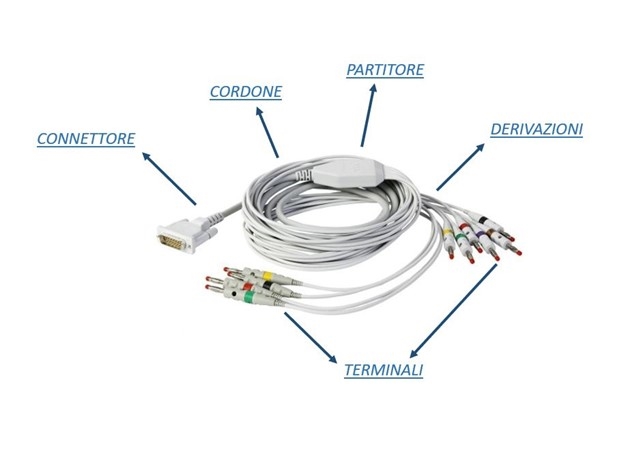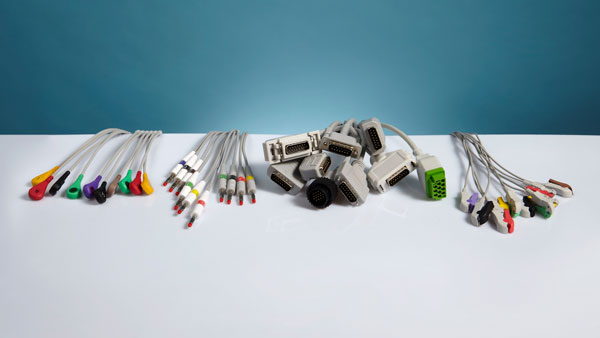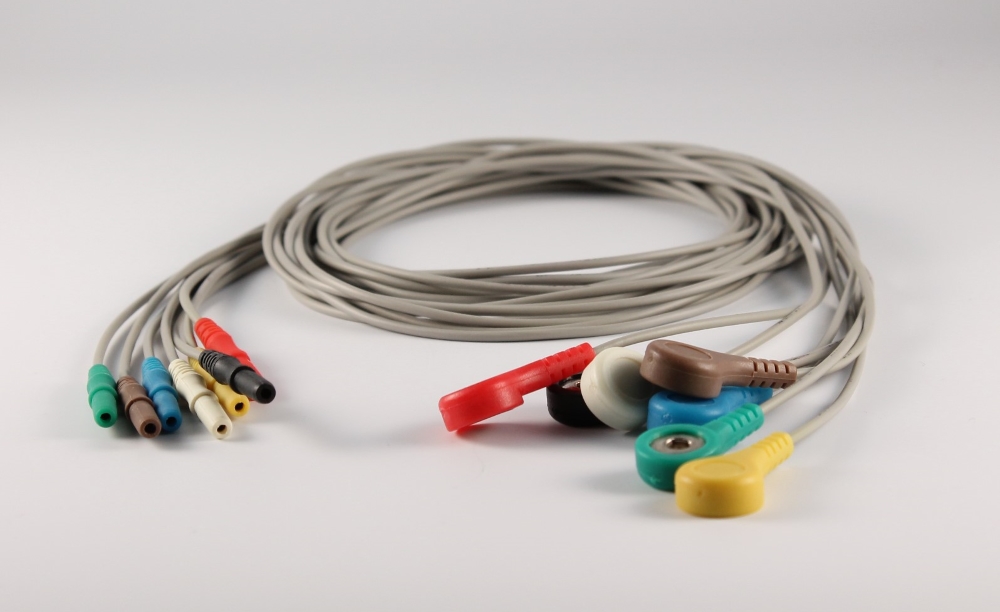
what does a patient cable for ecg look like?
PATIENT CABLES
The patient cable is a class I medical device and is used to connect medical equipment such as electrocardiographs, monitors, recorders and Holter to electrodes attached to the patient’s body. It is therefore an indispensable element in monitoring and diagnostic systems in the medical and hospital fields.

Let’s understand the coding
|
ONE-PIECE CABLES FOR ELECTROCARDIOGRAPHS OR STRESS-TEST |
|
 |
|
| 1 | It identifies the plug towards the device, or the device itself |
| 2 | R: protected from defibrillation ; Void: not protected |
| 3 | Type of terminals: B (or void) = 4mm Banana, G = Pinch/Grabber, S = Snap |
| 4 | I: IEC Color Coding |
| 5-7 | Trunk cable length (cm): 200 cm (standard) or 350 cm (XL) |
| 8, 9 | NV: the plug towards the device has no screws |
EXAMPLE:
EE100LRSI-200 10-lds cable, with 4mm Banana terminals and Standard length, for LUMED devices
|
LEADSWIRES FOR ELECTROCARDIOGRAPHS OR STRESS- TEST |
|
| 1 | Type of terminals: B = 4mm Banana, G = Pinch/Grabber, S = Snap |
| 2-4 | It identifies the type of plug, towards trunk cable or ECG module |
EXAMPLE:
EE103BK-CAM 10-lds 4mm Banana for CAM module





